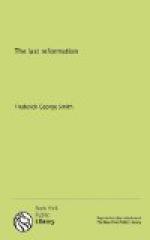“And I stood upon the sand of the sea, and saw a beast rise up out of the sea, having seven heads and ten horns, and upon his horns ten crowns, and upon his heads the name of blasphemy. And the beast which I saw was like unto a leopard, and his feet were as the feet of a bear, and his mouth as the mouth of a lion: and the dragon gave him his power, and his seat, and great authority. And I saw one of his heads as it were wounded to death; and his deadly wound was healed: and all the world wondered after the beast. And they worshiped the dragon which gave power unto the beast: and they worshiped the beast, saying, Who is like unto the beast? who is able to make war with him? and there was given unto him a mouth speaking great things and blasphemies; and power was given unto him to continue forty and two months. And he opened his mouth in blasphemy against God, to blaspheme his name, and his tabernacle, and them that dwell in heaven. And it was given unto him to make war with the saints, and to overcome them: and power was given him over all kindreds, and tongues, and nations. And all that dwell upon the earth shall worship him, whose names are not written in the book of life of the Lamb slain from the foundation of the world. If any man have an ear, let him hear. He that leadeth into captivity shall go into captivity: he that killeth with the sword must be killed with the sword. Here is the patience and the faith of the saints” (Rev. 13: 1-10).
From the nature of the symbol employed, we should naturally infer that a persecuting, tyrannical kingdom or empire is meant. That such an application of the term “beast,” when used in connection with prophetic symbols, is correct, is shown by a reference to the interpretation given concerning the fourth beast of Daniel’s vision. “The fourth beast shall be the fourth kingdom upon the earth” (Dan. 7:23). We have already shown conclusively that by the dragon was meant the pagan Roman Empire, and the same heads and horns are apparently ascribed to this leopard-beast, the only difference being that the crowns—a symbol of sovereignty—have been transferred from the heads to the horns. This substantial agreement with the facts of history makes certain the identification of this beast with the revised western Roman Empire under the papal form, the sovereignty being vested in the ten minor kingdoms until they chose to “give their power and strength unto the beast” (Rev. 17:13).
The symbol of a beast considered merely as a beast, could not, in the nature of the case, signify anything more than a temporal kingdom or political empire. It will be noticed, however, that this particular prophetic symbol is more than a beast; for, combined with his beastly nature, there are certain characteristics which unmistakably belong to the department of human life—a mouth speaking great things; power to magnify himself against the God of heaven, to set himself up as an object of worship, to single out the saints of God and kill them, etc. This combination of symbols from the two departments—animal life and human life—points us with absolute certainty to the political-religious system of Rome.




